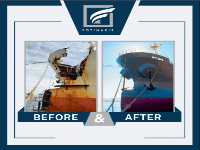After developing the technique some five years ago, Aker Arctic has now completed the research required to get its new design methodology for icebreaker hulls accepted into the Finish-Swedish Ice Class Rules.
After developing the technique some five years ago, Aker Arctic has now completed the research required to get its new design methodology for icebreaker hulls accepted into the Finish-Swedish Ice Class Rules. The method has also been adopted to Polar Class rules of several Class Societies (LR, ABS, DNV).
Although the research focused on vessels typically sailing the Baltic Sea, Aker Arctic has also used the methodology in many of its recent newbuilding designs including, for example, Canada’s new icebreaker which is currently under construction. The innovation is not specific to any particular region or ice load, rather it extends the modelling of steel plate and reinforcements such as web frames beyond the elastic properties that help prevent denting to also include the plasticity that ensures they do not fracture after deforming.
Typically, mathematical formulas or direct linear calculations made with finite element analysis (FEM) have considered the elastic behavior only, with the plasticity of the steel beyond yield point assumed to follow the same linear relationship. Elastic behavior is quite linear in nature – the more pressure, the deeper the dent – but the plasticity is not, so predicting structural failure based on linear analysis involves making assumptions. The
Content Original Link:
" target="_blank">


































































